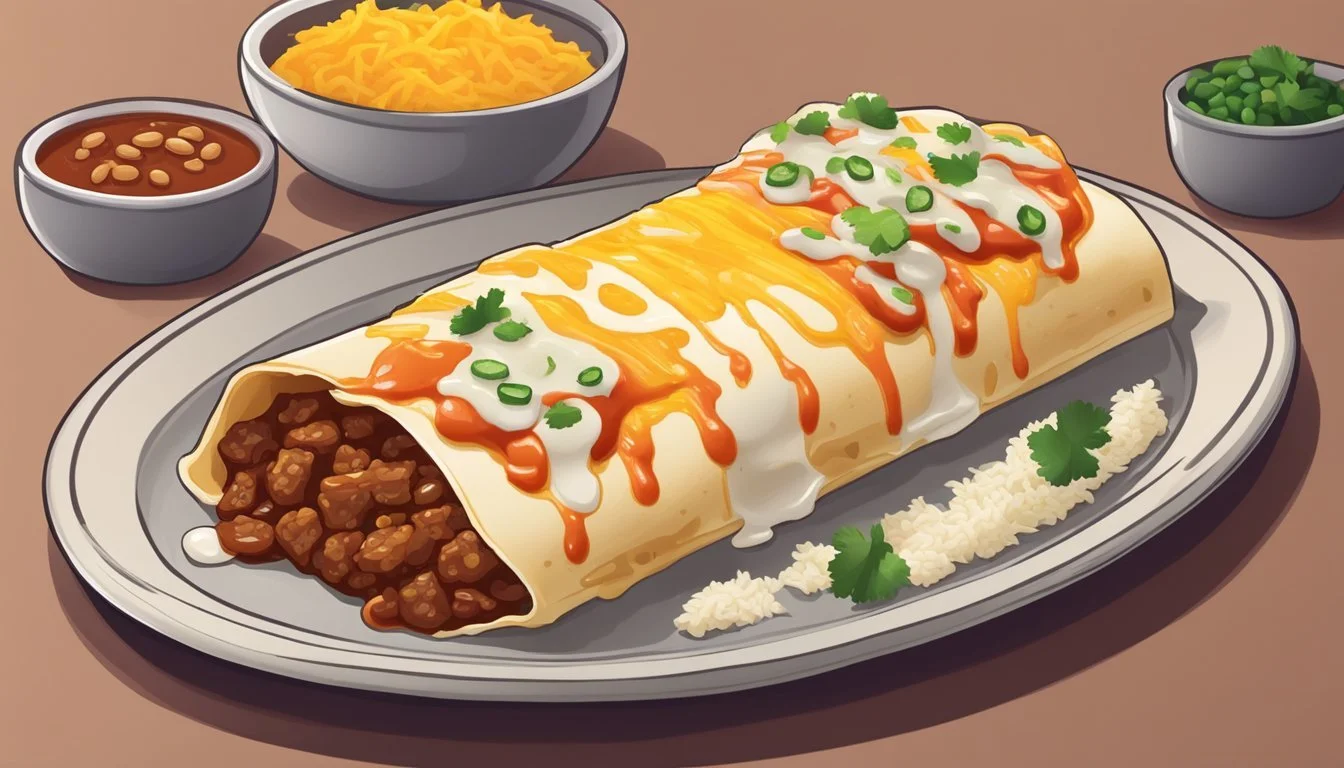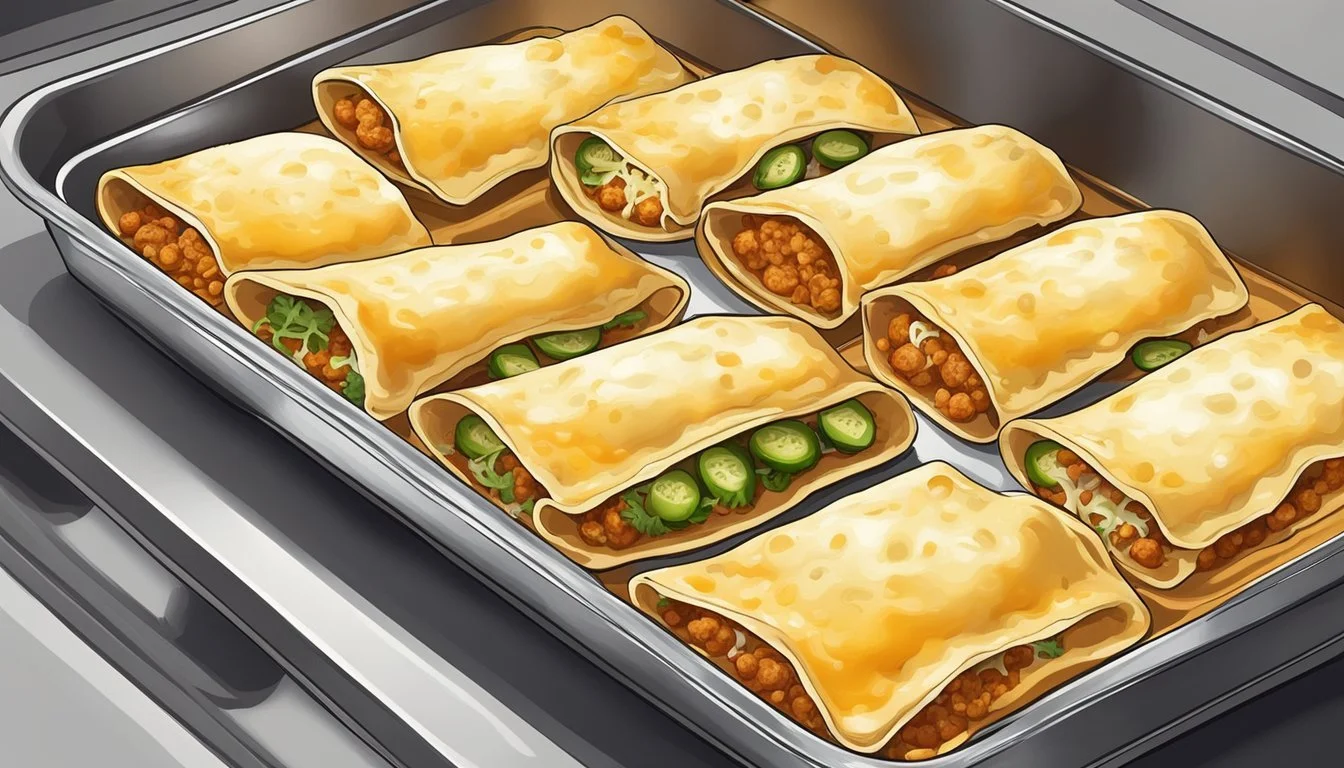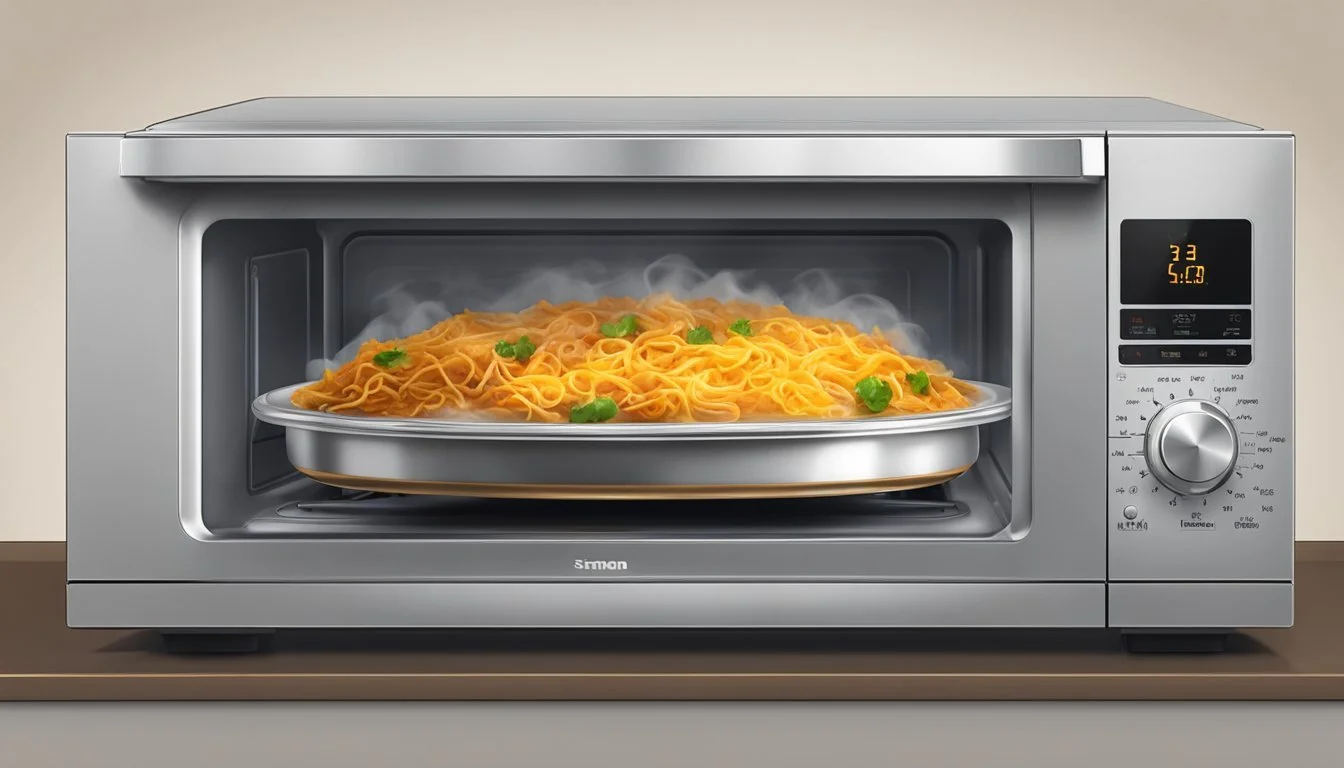How to Reheat Beef Enchilada for Maximum Flavor and Texture
Reheating beef enchiladas can be a simple task if done correctly, preserving the delightful flavors and textures that make them a favorite dish. The best way to reheat beef enchiladas is by using an oven, as it ensures even heating and keeps the enchiladas from becoming soggy. Simply preheat your oven to 350°F, place the enchiladas in an oven-safe dish, cover them with aluminum foil, and bake for 20 minutes, removing the foil in the last 5 to 10 minutes for a perfectly melted cheese topping.
Microwaving is another convenient option, especially if you’re in a hurry. For best results, unwrap your enchiladas and place them on a microwave-safe plate. Cover them with a splatter guard and microwave on high for about 2 minutes. If needed, cut them into pieces or poke holes to ensure evenly distributed heat.
For those looking to achieve a bit of crispiness, reheating enchiladas in a skillet can be a great choice. Heat a small amount of oil in the skillet over medium-high heat and cook the enchiladas for 2-4 minutes until the bottoms are crispy. This method can make your leftover enchiladas taste almost as fresh as when they were first made.
Understanding Enchiladas
Enchiladas are a staple in Mexican cuisine, known for their rich fillings and savory sauces. This section will explore the various types of enchiladas and the essential components that make up this beloved dish.
Types of Enchiladas
Enchiladas come in a variety of forms, each distinguished by the type of tortilla used and the filling. Corn tortillas are traditional, offering a slightly gritty texture and robust flavor. Flour tortillas, on the other hand, provide a softer, pliable texture.
Popular types include:
Chicken Enchiladas: Shredded chicken combined with cheese and a red or green enchilada sauce.
Beef Enchiladas: Generally made with ground beef or shredded beef, layered with cheese and often complemented with refried beans.
Cheese Enchiladas: A simple, yet delectable version featuring cheese-filled tortillas smothered in enchilada sauce.
Vegetable Enchiladas: Packed with vegetables like bell peppers, onions, and sometimes refried beans, making them a great vegetarian option.
Components of an Enchilada
The heart of any enchilada lies in its components, which include the tortilla, filling, and sauce.
Tortilla: The foundation of an enchilada, it can be either corn or flour, and even whole wheat tortillas for a healthier option.
Filling: A versatile element that can vary from shredded chicken, ground beef, and cheese to an assortment of vegetables and beans.
Enchilada Sauce: This essential component ties the dish together. Red sauce often made from tomatoes and chilies, and green sauce made from tomatillos and green chilies, are the two most common varieties.
Cheese: A crucial element that adds richness. Commonly used cheeses include cheddar, Monterey Jack, or a Mexican blend.
These elements work in harmony, creating the savory and flavor-packed dish that enchilada lovers crave.
Preparation for Reheating
Properly preparing beef enchiladas for reheating ensures the best flavor and texture. This involves careful handling of leftovers and the correct defrosting methods for frozen enchiladas.
Handling Leftovers
Storing leftovers correctly is crucial. After cooking, allow the beef enchiladas to cool to room temperature. Then, wrap them tightly in plastic wrap or aluminum foil. For additional protection against freezer burn, place them in an airtight container or freezer-safe bag.
Refrigerate the enchiladas if you plan to eat them within 3-4 days. If storing for a longer period, freezing is the best option. Ensure the enchiladas are labeled with the date to track their freshness.
Defrosting Frozen Enchiladas
When ready to reheat frozen enchiladas, defrost them in the refrigerator overnight. This slow defrosting method maintains the texture of the tortilla and prevents sogginess. If in a hurry, use the defrost setting on a microwave, monitoring to avoid uneven heating.
Avoid leaving enchiladas at room temperature to defrost as this can lead to bacterial growth. After defrosting, they are ready for reheating in your preferred method, such as an oven or microwave. Always ensure the enchiladas reach an internal temperature of at least 165°F for safe consumption.
Reheating Enchiladas in the Oven
Reheating beef enchiladas in the oven ensures they stay crispy and flavorful. Two critical aspects include following a clear step-by-step process and avoiding common pitfalls.
Oven Reheating Step-by-Step
1. Preheat the oven: Set your oven temperature to 350°F (175°C). Preheating the oven guarantees even cooking.
2. Prepare the baking dish: Place your enchiladas in an oven-safe baking dish or casserole dish. Arrange them in a single layer to avoid overcrowding.
3. Cover with aluminum foil: To retain moisture and prevent the edges from drying, cover the dish with aluminum foil. This helps to heat the enchiladas evenly.
4. Heating time: Bake the enchiladas for about 20-25 minutes. Check their temperature to ensure they are thoroughly warmed. If needed, leave them in the oven for a few more minutes.
Avoiding Common Mistakes
1. Skipping preheating: Always preheat the oven. Starting with a cold oven can result in uneven heating and a non-crispy texture.
2. Overcrowding the dish: Ensure there is space between enchiladas. Crowding prevents heat from circulating properly, leading to soggy enchiladas.
3. Aluminum foil errors: Not covering the dish can dry out the enchiladas, while an overly tight cover can trap steam, making them soggy. Cover the dish loosely to balance moisture retention and crispiness.
4. Incorrect heating time: Overheating can dry out the enchiladas, while too short heating time leaves them cold inside. Always check and adjust according to the specific oven and portion size.
By following these guidelines, you can achieve perfectly reheated beef enchiladas using the oven method.
Using the Microwave for Enchiladas
Reheating beef enchiladas in the microwave is quick and efficient, but it requires specific steps to maintain quality and avoid sogginess. This method is ideal for those short on time.
Microwave Reheating Step-by-Step
Prepare the Enchiladas: Start by placing the beef enchiladas on a microwave-safe plate. Avoid using metallic materials and opt for glass or ceramic instead.
Cover the Enchiladas: Use a plastic wrap or a splatter guard to cover the enchiladas. This helps trap moisture and heat, ensuring even reheating. For added flavor, a sprinkle of water or broth can keep the tortillas moistened.
Microwave Settings: Set the microwave to medium power. Heating at lower power prevents the enchiladas from drying out or becoming too hot on the outside while staying cold inside.
Initial Reheat Time: Heat the enchiladas for 2-3 minutes. Check if they are warm, and then flip them if necessary to ensure even reheating.
Reheat in Intervals: Continue microwaving in 30-second intervals, checking after each time. Once thoroughly heated, let them sit for a minute before serving.
Pros and Cons of Microwave Use
Pros:
Speed: Microwave reheating is the fastest method, ideal for quick meals.
Convenience: Perfect for individual portions, reducing the need for extra dishes and cleanup.
Energy Efficiency: Microwaves use less energy compared to ovens, making them an eco-friendly option.
Cons:
Texture Changes: Enchiladas may become soggy if not covered properly or reheated too quickly.
Uneven Heating: The microwave can heat unevenly, especially with thicker enchiladas, making it crucial to monitor and reheat in intervals.
Plastic Concerns: Using plastic wrap can lead to chemicals leaching into food. Opt for microwave-safe covers like splatter guards or parchment paper.
Alternative Reheating Methods
When reheating beef enchiladas, it is key to retain the texture of the tortillas and ensure the beef filling stays moist. Each method offers specific advantages depending on the equipment you have available.
Toaster Oven Techniques
Toaster Oven is a versatile tool for reheating enchiladas. Preheat the toaster oven to 350°F (175°C). Place the enchiladas on a baking dish that fits the toaster oven. Cover them with aluminum foil to prevent the edges from drying out. Heat for 15-20 minutes, checking periodically. For better results, remove the foil in the last 5 minutes of reheating to allow the tortillas to become slightly crispy. This method is beneficial when you need a compact solution without compromising the enchilada's quality.
Skillet Method
The Skillet Method is useful for those who favor a crispy texture. Heat a thin layer of oil in a skillet over medium-high heat. Place the enchiladas cheese side up and heat for 3-4 minutes. Flip carefully and cook for another 3-4 minutes or until the tortilla is crispy. This method excels in achieving a combination of crispy tortilla and warm, savory filling. Since this technique uses direct heat, it's best to monitor constantly to avoid burning.
Reheating with an Air Fryer
Using an air fryer adds convenience and efficiency. Preheat the air fryer to 350°F. Place the enchiladas in the air fryer basket, ensuring they are not too crowded. Cook for 6-8 minutes, which allows them to heat evenly while maintaining a good balance between a crispy exterior and a warm interior. It’s important to check midway and shake the basket if necessary to ensure even heating. This method is ideal for those seeking a quick reheating solution without compromising flavor and texture.
Best Practices for Reheating
When reheating beef enchiladas, it is essential to maintain their moisture and flavor, achieve the desired crispy texture, and understand the best serving and storage methods. Here are the best practices to ensure your enchiladas are as delicious as they were when first made.
Maintaining Moisture and Flavor
To keep enchiladas moist, one should start by preheating the oven to 350°F. This even heating helps to retain moisture in the filling and tortilla.
Wrap the enchiladas in aluminum foil to prevent the enchilada sauce from drying out. The foil traps steam, ensuring the filling remains succulent and the cheese melts evenly.
Adding a splash of enchilada sauce before placing the foil can enhance flavor. Microwave reheating is quicker, but risks drying the tortilla; add a small dish of water inside to maintain humidity.
Achieving a Crispy Texture
For a crispy texture, use a skillet. Heat a greased skillet over medium-high heat and place the enchilada cheese-side up. After a few minutes, sprinkle water in the pan and cover it to steam the cheese for around 2 minutes.
Alternatively, bake the enchiladas uncovered for the last 5-10 minutes of oven reheating. This method crisps the tortilla edges without drying the filling.
These techniques strike a balance between achieving a crispy exterior and maintaining a tender, flavorful interior.
Serving and Storage
Leftovers should be stored correctly to preserve quality. Store enchiladas in an airtight container in the refrigerator for up to 3 days. For longer storage, freeze them individually wrapped in aluminum foil and then placed in a freezer-safe bag.
When ready to reheat, thaw frozen enchiladas overnight in the refrigerator. For serving, garnish with fresh shredded cheese, chopped cilantro, and a dollop of sour cream to enhance flavor and presentation.
Ensure that the reheating temperature reaches an internal temperature of 165°F for safe consumption. Following these steps will ensure that your enchiladas are as tasty and satisfying as they were when first made.
Pairing and Serving Suggestions
When serving reheated beef enchiladas, the right pairings can enhance the meal. From side dishes to beverages, thoughtful choices can elevate the dining experience.
Complementary Side Dishes
A traditional choice often includes Mexican-style rice and refried beans. These sides are easy to prepare and complement the flavors of beef enchiladas. A side of seasoned Mexican rice adds texture and a mild flavor that does not overpower the entrée.
Refried beans provide a creamy contrast. They can be served as is, or seasoned with garlic and spices for added flavor. Alternatively, a fresh vegetable side, like a simple salad with lettuce, tomatoes, and onions dressed in lime juice, brings a refreshing balance to the rich enchiladas.
Beverage Pairings
Pairing the right beverage with beef enchiladas can enhance the rich flavors. Tequila-based margaritas are a classic choice that complements the spiciness of the meat. They can be served frozen or on the rocks depending on preference.
For a non-alcoholic option, agua fresca offers a refreshing counterpoint. Flavors like hibiscus or tamarind work well. Traditional Mexican beers like Corona or Modelo are also excellent choices, providing a crisp and light accompaniment.
Wine enthusiasts might opt for a light red wine like Pinot Noir or a medium-bodied Zinfandel. These wines have enough complexity to stand up to the enchiladas without overwhelming the palate.






